Vladimir Putin looks weak and frail amid ongoing rumours over the Russian President’s health – as he holds talks in Belarus over the Ukraine war
Vladimir Putin looked strange today at a conference with Belarusian ally Alexander Lukashenko, as the pair met to discuss the war in Ukraine.
The Russian president, 71, posed for cameras to shake hands with his counterpart in Minsk but appeared weak as he discussed developments in the conflict across the southern border.
The aging Russian tyrant was received by Lukashenko in the Belarusian capital on Friday, where Putin questioned the legitimacy of Ukrainian President Volodymyr Zelensky in power, discussed domestic nuclear exercises and agreed on further cooperation with Belarus.
But Putin appeared at a news conference after the meeting looking tired and decrepit, while Ukraine claimed small successes in reversing its shocking progress in the Kharkiv region.
There is much speculation about the health of Putin, who was sworn in for his fifth term as president in March, some 24 years after he first came to power.
Since the beginning of the war, much attention has been paid to the health and appearance of the Russian president
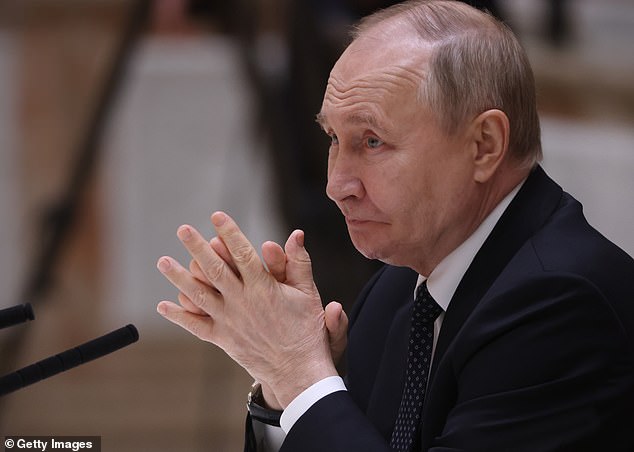
The Russian leader looked strange as he attended a press conference in Minsk today
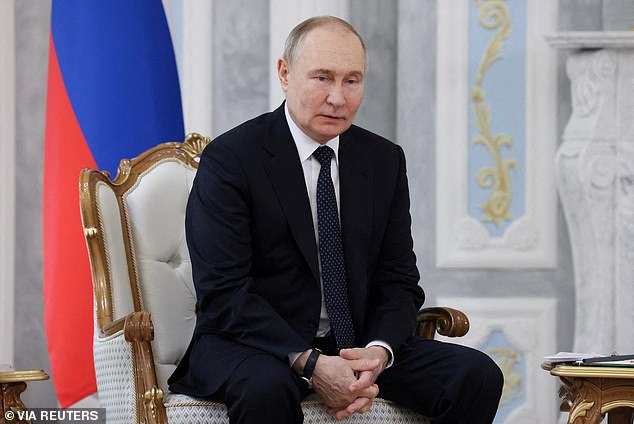
Putin will meet with Lukashenko in Minsk, Belarus on Friday
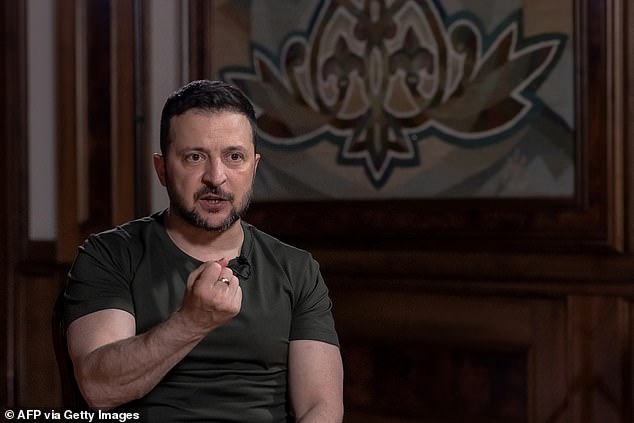
Ukrainian President Volodymyr Zelenskyy speaks during an interview with AFP on May 17
Rumors about the Russian president’s declining health, mental state and unstable position have been circulating long before he ordered the invasion on February 24, 2022, but the war appears to be taking its toll on Vladimir Vladimirovich.
Footage from official meetings and appearances shows Putin gripping a table for support, tapping his feet and looking unsteady as he walks, his appearance becoming increasingly round and puffy over the years.
In December, Putin withdrew from a presidential trip to Pskov at the last minute due to “unfavorable flying conditions” despite weather forecasts indicating clear skies, prompting onlookers to ask questions about his health.
He then suspended a visit to Russia’s largest tank factory in Nizhny Tagil and also canceled his usual appearance at an end-of-year meeting of his ministers, before canceling his traditional December press conference and year-end ice hockey match.
In October last year, the Kremlin was pressured to deny rumors that Putin had suffered a cardiac arrest, with spokesman Dmitry Peskov rating the speculation as ‘fake’.
‘This [kinds of stories] belong to the category of fake news, which is covered with enviable tenacity by a number of media outlets. This produces nothing but a smile [in the Kremlin]’ he said at the time.
Peskov also dismissed accusations that Putin used “doubles” to fill in for him at official events during bouts of illness.
Days earlier, the channel General SVR Telegram, which regularly claims that Putin is terminally ill and has cancer, had claimed that Putin had suffered a ‘cardiac arrest’.
Doctors performed CPR after previously determining that the president was in cardiac arrest,” the channel reported. “Aid was provided in time, the heart was started and Putin regained consciousness.”
In a 2020 interview before the 2022 invasion, Putin denied long-standing rumors that he would use body doubles, although he said he had been offered the opportunity to use one in the past for security reasons.
Putin also appeared less cheerful than usual today as he addressed reporters at a news conference in Minsk.
The Russian president discussed the war in Ukraine, possible paths to peace and the use of nuclear exercises at home.
He said he was now ready to hold talks on settling the war in Ukraine – not for the first time – and took the opportunity to criticize the legitimacy of Ukrainian President Volodymyr Zelensky in power.
With Putin in Minsk, Russian sources told Reuters that the Russian president was indeed ready and willing to stop the war in Ukraine with a negotiated ceasefire that recognizes the current battlefield lines – or continue fighting if the West does not respond.
“Of course we are aware that the legitimacy of the current head of state has come to an end,” said Putin, who has repeatedly stated that Russia is ready for talks with Ukraine.
“We must be completely certain that we are dealing with legitimate authorities.”
Putin claimed that Zelenskiy’s presidential term would end on May 20, seizing the opportunity to undermine his opponent.
Ukrainian law bans elections during martial law that has been in place since Russia launched its invasion in February 2022.
The country would have to adapt the law to elections during a state of war.
Zelensky has also rejected the conditions Russia has set for talks, including allowing Russia to keep territory that Kremlin forces have seized since the February 2022 invasion.
The two-day visit to Belarus was one of several foreign trips Putin used to kick off his fifth term in office.
Russia and Belarus are maintaining increasingly close relations and eventually envisage the formation of a so-called ‘union state’.
During their speech in Minsk, both Putin and Belarus shared their intentions to strengthen their cooperation in industry and technology in light of Western sanctions on both their economies.
Putin also took the opportunity to discuss his nuclear exercises, stressing that his latest exercises this week were not an escalation by Russia.
Putin said the only difference this time is that the exercises also involve Belarus, where Russia announced last year it would deploy tactical nuclear missiles.
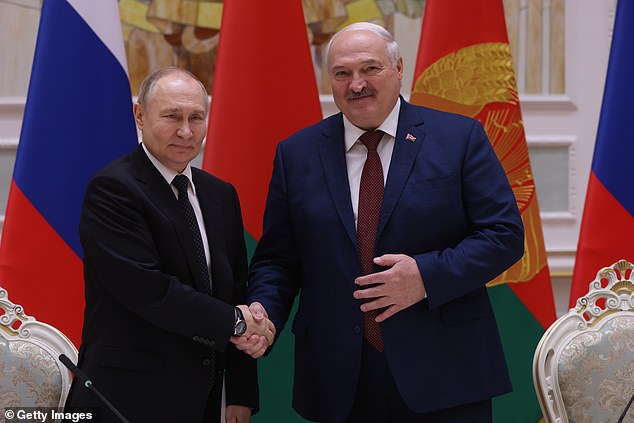
The 71-year-old was pictured next to his ally, Belarusian President Alexander Lukashenko
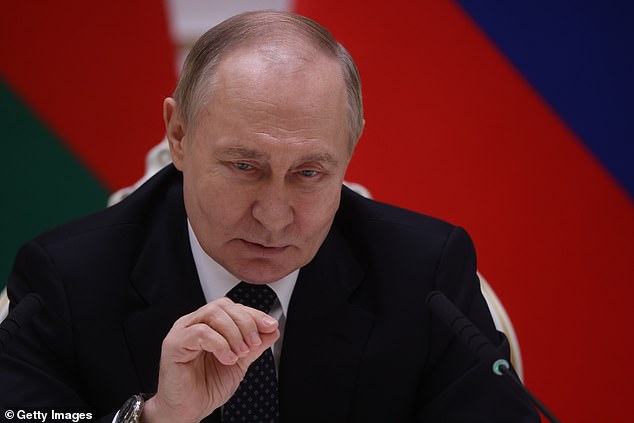
Putin was hosted by Lukashenko at the Palace of Independence in Minsk, Belarus on May 24

Putin used the conference to discuss the war in Ukraine and consider options for peace
Putin reopened Russia’s offensive in the Kharkiv region this month, making rapid gains and expanding the offensive from north to south.
Contemporary reports claimed that Putin’s forces “simply” ran through Ukraine’s first line of defense in the region, swallowing up villages in a shock blitzkrieg offensive.
The operation, which launched on May 10, saw Russian artillery and airstrikes storming towns and villages in Kharkov before Moscow’s troops crossed the border again.
Zelensky blamed “the world” for allowing the attacks to take place, stressing the need for military support.
When the US announced $275 million in new military aid to Ukraine today, Ukraine claimed to have secured “combat control” in the northern parts of the region.
“Our soldiers have now managed to take control of the border area where the Russian occupiers entered,” Zelensky said in his nightly video address.
Zelenskiy’s comments, after a meeting of military and regional officials in Kharkiv, Ukraine’s second-largest city, appeared to contradict those made by Russian officials.
Viktor Vodolatskiy, a member of Russia’s parliament from the State Duma, was quoted by Tass news agency as saying that Russian forces controlled more than half of the territory of the city of Vovchansk, 5 km inside the border.
Analysis by the Institute for the Study of War claimed today that Ukrainian forces had recently retaken marginal territory north of the city of Kharkiv.
Geographically localized images published earlier this week showed Ukrainian forces had withdrawn southeast of Lukyantsi, the monitor reported.
There were no confirmed changes to the front line around Vovchansk on May 23, despite claims from Russian milbloggers to the contrary, it added.
One of them admitted that Russian forces were now “bogged down” in street fighting with Ukrainian forces, despite initial tactical successes.
Prominent mil blogger Syrskyi said Russia now had to move reserves into the area from other regions.
Late last month, the United States finally approved a $95 billion foreign aid package for Ukraine, Israel and Taiwan, which included $61 billion for their allies in Kiev and replenishing U.S. supplies.
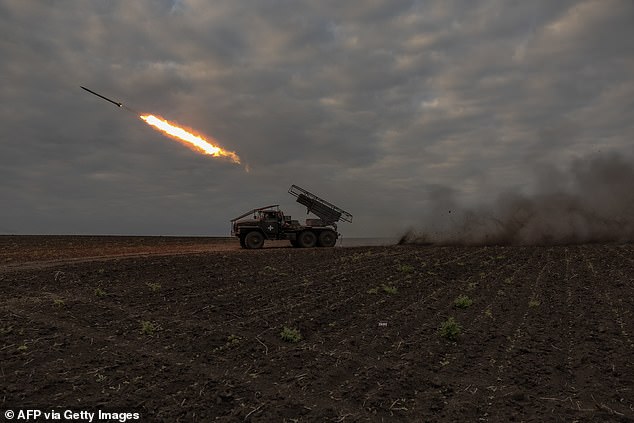
Ukrainian forces fire a Grad multiple rocket launcher towards a Russian position on May 15
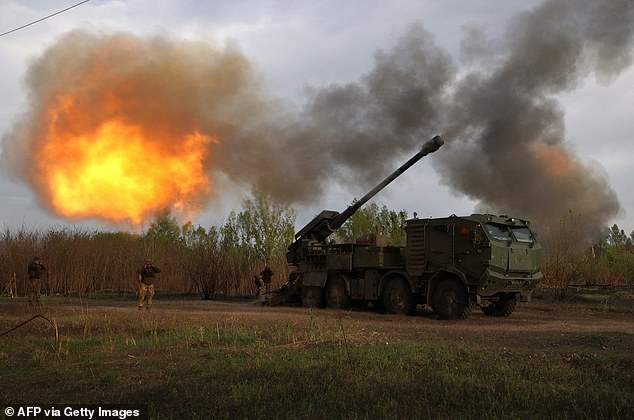
Ukrainian troops fire on a Russian position with a 155mm howitzer in the Kharkov region, April 21
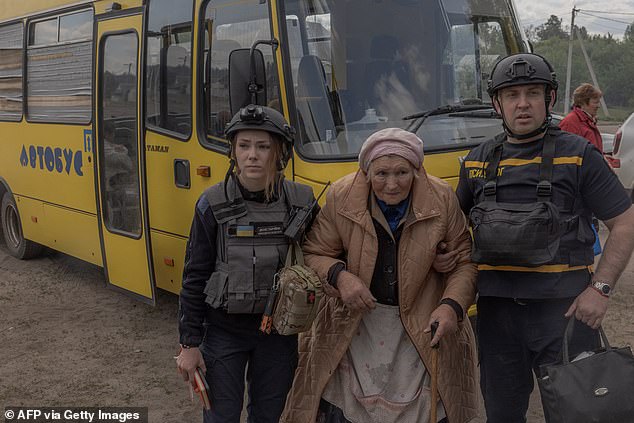
A Ukrainian evacuee arrives at an evacuation point in the Kharkov region on May 12, 2024
The total amount provided to Ukraine for the purchase of weapons would amount to $13.8 billion, which could soon re-equip Kiev’s defenders with much-needed artillery, long-range missile systems and ammunition.
Ukraine would also receive more than $9 billion in economic aid from the US in the form of “forgivable loans.”
The bill remained stuck in the House of Representatives for months, preventing new aid from coming to Ukraine since December.
Zelenskyy expressed his gratitude to the House of Representatives for passing the colossal aid package, saying it could save thousands of lives.
Ukraine’s depleted air defenses have left Russia with far less friction in conquering hundreds square kilometers of territory in recent months.
